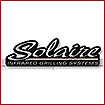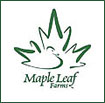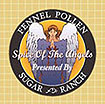Soda
Sales Go Flat, Industry Fights Back
On
the surface it seemed like a double blow to the
soda industry.
According
to data released earlier this month by Beverage
Digest, an industry trade journal, the number
of cases of soda sold in the United States has
declined for the first time in 20 years.
In case your subscription to Beverage Digest has
lapsed, I'll share the figures. The case
volume in 2005 was down 0.7 percent, to a mere
10.2 billion cases of soda.
A
study in the journal Pediatrics this month showed
a direct correlation between weight gain in teenagers
and the consumption of soda and other sugary drinks.
In
case your subscription to Pediatrics has lapsed,
too: The study involved 103 teenagers who were
regularly consuming about 350 calories worth of
sugary drinks a day. Half of these kids
were given a supply of bottled water, unsweetened
teas and other non-caloric drinks for 25 weeks.
This led to an 82 percent drop in the consumption
of the sugary stuff and a weight loss of about
a pound a month. There was no weight loss,
of course, in the control group.
But
before you shed a tear for the soda industry,
keep in mind the underreported fact that while
sales were down last year, sales revenue went
up because the prices were higher. And Coca-Cola
and PepsiCo own over half the bottled water market,
anyway, as well as a considerable amount of the
tea trade.
Nevertheless,
the American Beverage Association, a lobbying
group for the beverage industry, quickly lashed
out at the study with this classic, pro-industry
statement: "It stands to reason that
anyone could lose weight if calories from any
certain food or beverage are removed and not replaced
by other calories. Soft drinks are not distinctive
in this regard."
That's
right. And how bad is smoking for you, really,
when you replace it with eating dioxin?
This
is industry smokescreen and bad medicine.
At issue here is the concept of empty calories.
Sugary drinks offer little nutritional value.
They are liquid candies. A 20-ounce bottle
of regular soda pop contains nearly 70 grams of
sugar, almost five tablespoons. A gram is
about the weight of a raisin. Fill a glass
with 70 raisins, and you'll get an idea of how
much sugar you're ingesting when you drink soda.
Think
back to those kids drinking 350 calories a day.
The average person needs about 2,000 to 2,200
calories a day. So more than 15 percent
of these kids' calories are providing no nutrients.
Two 20-ounce Cokes total 500 calories, a quarter
of the quota. This is clearly not conducive
to weight management.
And
the American Beverage Association is wrong about
soda being just like any other 350 calories.
Simple, processed sugars in soda, such as corn
syrup, quickly raise blood sugar levels and over-tax
the insulin-producing pancreas, a major cause
of diabetes.
The
beverage industry should welcome the news of declining
soda sales and adverse health affects. Bottled
filtered water, as opposed to spring water and
mineral water, is municipal tap water filtered
to an unspecified degree (company secret).
This kind of bottled water is soda without the
soda, sold for about the same price. I thought
these guys would have read the soda health report.
















